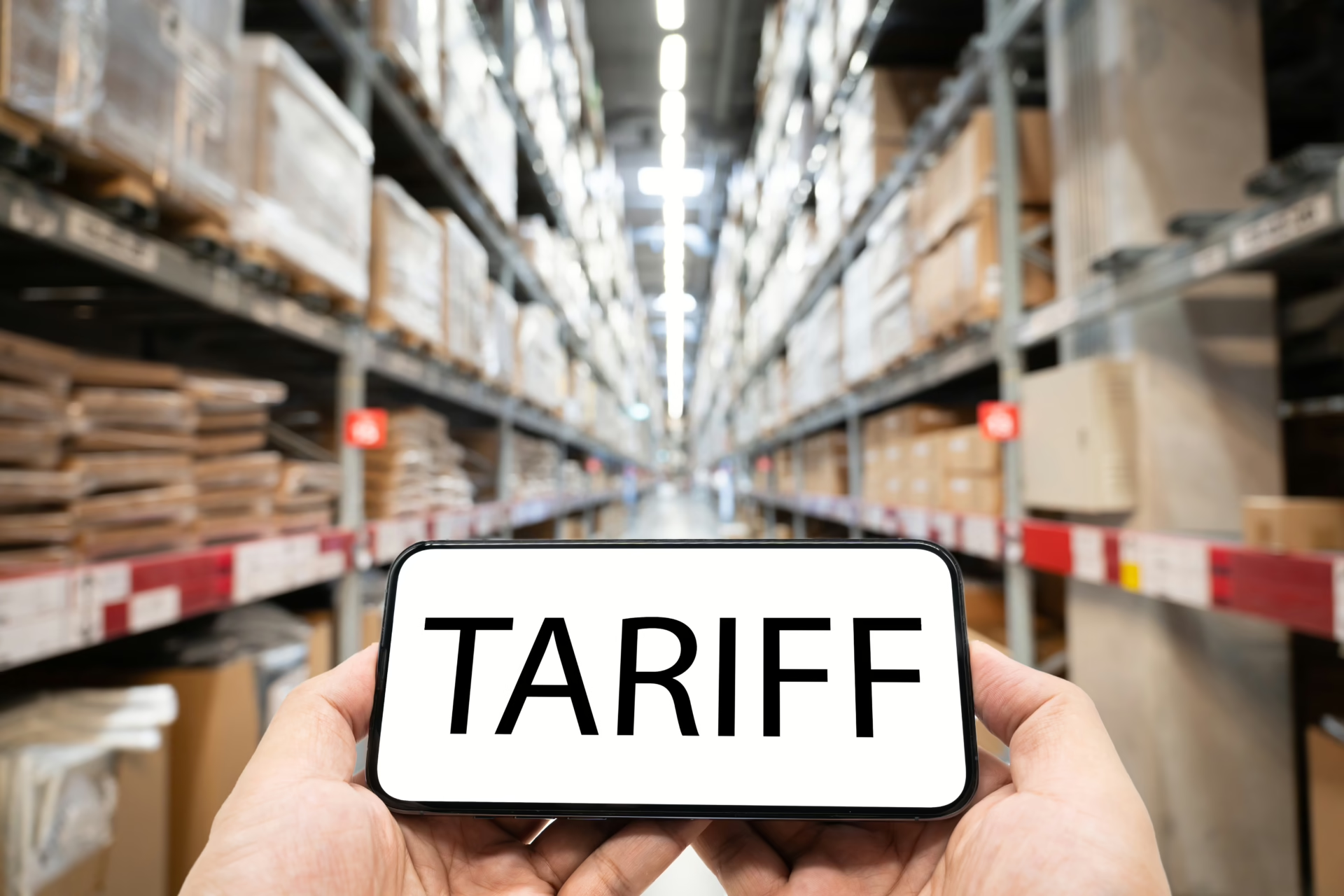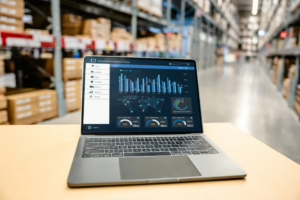
The disruption caused by ever-changing tariffs is more than just a line-item headache—it can erode small and mid-sized businesses’ (SMBs) margins and market share. Unlike larger enterprises, SMBs typically face tighter liquidity and more limited access to capital, reducing their ability to absorb shocks or pivot supply chains in response.
And the pressure is mounting. According to an April 2025 report by the U.S. Joint Economic Committee and Small Business for America’s Future,
- 78% of small businesses expect higher costs,
- 58% anticipate supply delays, and
- 49% are struggling to find new suppliers
These stats paint a stark picture: SMBs are feeling the pinch from tariffs more acutely than ever before. Yet for many domestic SMBs, reshaping global sourcing strategies or offshoring production simply isn’t a practical option.
There’s a growing buzz around “tariff-proofing” your business. But for SMBs, many of the high-level strategies being discussed in boardrooms are unscalable or financially out of reach. At the same time, just absorbing tariff costs or pushing those costs onto price-sensitive customers is often a non-starter.
What SMBs can do is identify and implement tariff-proofing strategies that are both practical and impactful—those that match their business model, leverage existing capabilities, and drive measurable protection to margins and market share. Below, we explore several of these scalable, results-driven approaches.
Three Moves to Make a Measurable Difference
-
Explore Lucrative Markets Less Affected by Tariffs
Tariffs can serve as a wake-up call, nudging businesses to break from operational complacency. One of the most overlooked strategies is expanding into new markets that are either exempt from or less impacted by tariff constraints. While not every SMB can explore this route, many have untapped potential waiting to be leveraged.
Start by evaluating your core competencies—those unique capabilities that fuel your value proposition. These can include specialized skillsets, access to niche markets, proprietary internal processes, capital equipment, or advantageous locations.
Case in point: I once served on the executive team of a public works utility contractor during the telecom boom. Initially, we saw the IT communications sector as out of reach due to our lack of direct experience. However, our deep project management know-how, skilled labor force, and white-glove service model aligned closely with what the telecom market required. Without investing a cent in CAPEX to pivot , we repositioned our business and became a dominant player in the fiber infrastructure space in the DMV region—eventually evolving into a leading seller and lessor of dark fiber assets.
How can you discover similar opportunities?
- Study your competitors: Are they successfully entering new markets using capabilities similar to yours?
- Conduct a customer segmentation analysis: Many businesses already have a foothold in untapped sectors through customers who fall in the “Opportunistic” or “Marginal” segments of their base. By analyzing buying trends and behaviors, SMBs can often identify strategic inroads into these emerging sectors at a relatively low cost of entry.
Customer segmentation is a powerful, practical strategy that all SMBs can leverage to identify new and hidden opportunities. Download this Guide to learn more.
-
Implement Intelligent Pricing Strategies
For most SMBs, a blanket price increase to counteract tariff-driven margin erosion isn’t realistic—it risks alienating current customers and shrinking market share. However, Intelligent Pricing offers a more nuanced approach that targets pricing adjustments strategically and situationally.
This includes:
- Dynamic Pricing: Adjusting prices based on real-time supply and demand.
- Loyalty Pricing: Rewarding customer tenure or frequency.
- Tiered Incentive Pricing: Offering pricing benefits based on volume or bundling.
What sets Intelligent Pricing apart is its reliance on data-driven decision-making. It’s not simply promotional pricing by SKU or product class. Instead, it requires deep insight into customer behaviors, buying triggers, and cross-relationships. This is where customer segmentation again becomes foundational—it enables you to identify where pricing flexibility exists and how much pricing power you have before facing pushback.
Want to learn how to apply this effectively? Download our Pricing Optimization Guide.
3. Lower Your Cost of Performance to Absorb What Tariffs Leave Behind
When tariff costs can’t be passed on to customers—and can’t be eliminated entirely—the only option left is to free up margin somewhere else. That’s why lowering your internal cost of performance becomes a non-negotiable move. For SMBs, this means running a tighter, more cost-efficient operation that opens up the bandwidth to absorb tariff-related impacts without sacrificing profitability or customer experience.
This isn’t about broad cost-cutting—it’s about strategic refinement. Start by evaluating core operations through three critical lenses: cost efficiency, scalability, and customer impact.
Ask:
- Total Cost of Ownership (TCO): Are your systems and vendors contributing to a higher-than-necessary Cost to Serve (CTS)?
- Scalability: Do your workflows and platforms grow with you—or slow you down?
- Customer Experience: Do your processes create friction, or do they build loyalty and retention?
High-impact focus areas include:
- Inventory Onboarding Costs: Optimize sourcing routes, shipping terms, and supplier reliability to reduce inbound costs.
- Agile Inventory Management: Leverage smarter forecasting and stocking strategies. Many SMBs are shifting from Just-in-Time (JIT) to Just-in-Case (JIC) inventory models—building buffer where volatility hits hardest. JIC, however, requires investment in analytics and capital reserves, so make it a strategic decision, not a default move.
- Automation & Digital Tools: Automate wherever possible to lower cost-per-transaction, increase accuracy, and boost throughput. From warehouse management to customer service and back-office processes, automation gives you two critical advantages: better insight and faster decision-making. Both are essential for absorbing costs without sacrificing performance.
In short, tightening internal efficiency isn’t optional—it’s the counterbalance to unavoidable tariff pain. And for SMBs with already-slim margins, it can be the difference between resilience and regression.
Conclusion
While SMBs may not have the deep pockets or global reach of large enterprises, they can implement meaningful, tariff-proofing strategies tailored to their size and structure. The key lies in being selective and strategic—choosing initiatives that maximize return on effort and cost, while reinforcing competitive advantage.
The strategies outlined above—from entering untapped markets to applying intelligent pricing and streamlining internal operations—represent realistic, scalable ways for SMBs to combat tariff disruption. That said, not every strategy will be right for every business.
Unlock Deeper Insight. Accelerate Profit.
We created Earnest & Associates with one goal in mind: to drive exceptional business profitability for our clients.
More than an implementation, software, and advisory firm, we help midmarket manufacturing and distribution companies devise and deploy effective growth strategies and improve their operational efficiency and bottom-line results by making the most of their ERP technology. Our proprietary Profitability Suite turns off-the-shelf ERP products into powerful workhorses customized to address the intricacies of your business. And with over 45 years of business performance and ERP experience, nobody is better positioned to guide organizations through the challenges of building an operational competitive advantage. At Earnest, we help you see, build, streamline and profit from your business like never before.







